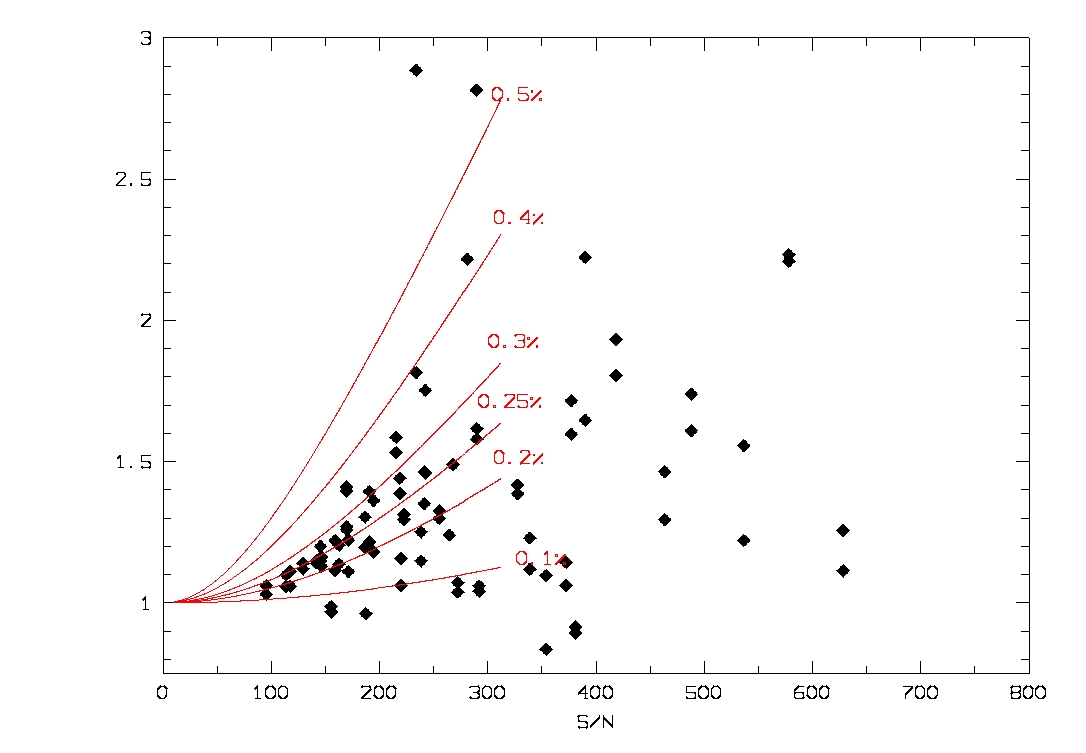
Accuracy of ALFOSC linear polarimetry using FAPOLThe limiting accuracy of ALFOSC has been tested for observations using 4 retarder plate positions (0°, 22.5°, 45°, and 67.5°). The accuracy using 8 or 16 angles should increase significantly, for other instruments an increase of the accuracy of about one order of magnitude was measured comparing observations with 4 and 16 retarder positions. Tests on this topic are ongoing, further results will be presented on this webpage. A detailed description of the accuracy tests can be found in the following paragraphs. Data used for the accuracy testsEach object was observed for approximately 4h in the R band, exposure times are in the range 5-20s. As the fast-photometry setup was used, read-out times are very short and around 50-200 polarimetry measurments were obtained per object, yielding very good statistics. MethodThe mean error was calculated from the errorbars for single measurements. Error calculations include shot noise and errors from the sky subractions, using error progression we find the errors for the Px and Py. The mean scatter was calculated as the standard deviation of the measurements for Px and Py. From these two values we calculated G for each object and realtive Stokes parameter as follows: We plotted G over S/N. It shows that the error estimations systematically underestimate the real error (derived from the scatter), ie G increases with total flux. This systematic error is the limiting accuracy of ALFOSC polarimetry. We estimated its value by plotting theoretical curves into the same plot, for these curves, a low polarized source is assumed. Error calculations are performed as for the real data. G is calculated as follows: ResultsThe systematic error begins to dominate at a signal to noise ratio of approximately 250 in one beam.
The result plot: filled symbols indicate data, red lines indicate the theoretical curves for different values of the sytematic errors. The curves are marked with the absolute error added, ie 0.1% is the ABSOLUTE systematic error added, not the relative. 
Comments to Tapio Pursimo or Carolin Villforth. |